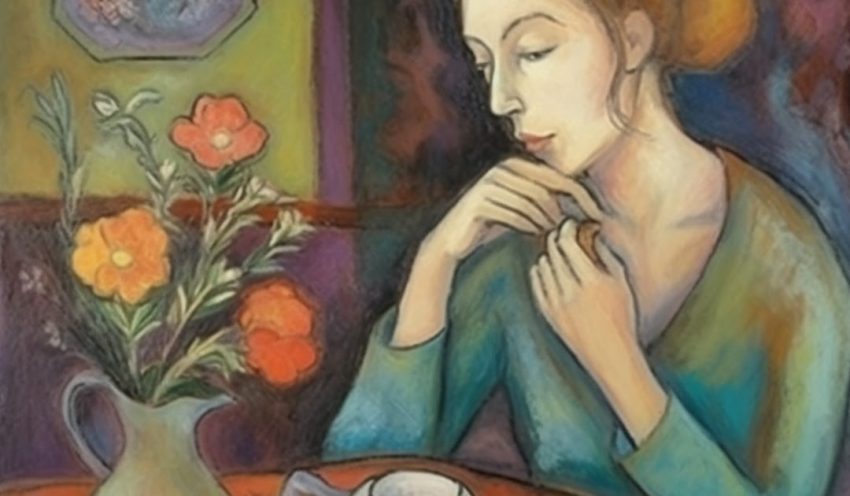My partner Paul took a taste of my iced tea today and surprised me by thinking it was good and that I should put it in my shop! I drink it for potential health effects so I never really stopped to consider whether it tasted good (as long as it doesn’t taste bad) and never considered selling it as a blend before. I just know that I like it during stressful times so I drink it almost every day right now. Maybe I’ll put it in my shop someday—I’m still experimenting with what I want to add in. But I’ll give you my current recipe at the end of this post.
Right now I’m working with a mixture of three different kinds of Holy Basil (Tulsi), Hawthorn leaves and flowers, a little Hibiscus, and Cinnamon Chips. I like it hot in the winter and cold in the summer and don’t add any sweetener (although you might think it tastes best that way).
I chose Holy Basil because herbalists use it as an adaptogen that is believed to help your body adapt to stress and create more emotional balance. It’s used in Ayurveda for those very qualities. It has anti-inflammatory and antioxidant qualities and studies indicate that it might be helpful for physical distresses that result from too much inflammation in the body. Using three different kinds of Holy Basil together makes for a very nice smelling and tasty blend (a little spicy, a little sweet). Some people find Holy Basil energizing but I find it relaxing. (Adaptogens seem to act like that, doing what you need for balance at any given time.)
I’m using Hawthorn leaves and flowers experimentally because I have high blood pressure and this herb has been well studied with documented effects on heart health. I can’t say it will work for anyone or even that you should use it medicinally without consulting with your doctor. However, my doctor knows I’m experimenting and just warned me not to let my blood pressure get too low without telling him so he can adjust my medication. (So far, such dramatic effects have not happened.) Hawthorn also has antioxidant and anti-inflammatory qualities. It doesn’t have a very strong taste but I sometimes detect mildly sweet and slightly tangy notes.
Hibiscus is a strongly sour-tasting dried flower herb ingredient (a flavor you might remember from Red Zinger Tea). I use just a little in my blend because it upsets my stomach in too large a quantity. But—even though there are not enough good long-term studies to back me up on this—I am quite convinced that when I was drinking more of it that it did lower my blood pressure significantly more than when I was drinking this blend without hibiscus added. (Again, I can’t say this will work for you! And I don’t recommend drinking anything excessively.) I seem to tolerate Hibiscus a lot more when I’m hot in the summer than when I’m cold. It’s a very cooling herb energetically.
I recently added Cinnamon to the mix because I love the taste but it also is used for anti-inflammatory and antioxidant effects. It goes well with Hibiscus—that combination made strong with lots of sugar is a popular drink in Jamaica. Cinnamon is warming energetically so it might help balance the blend.
Recipe for Normal Use
- 1 part Holy Basil Blend
- 1 part Hawthorn Leaves and Flowers
- 1/2 part Cinnamon Chips
- 1/4 -1/3 part Hibiscus (or more, if you prefer)
- Mix together.
- Add at least 1 tablespoon of the blend per cup of tea to a tea strainer.
- Pour hot water over the top and steep, covered, for 3-5 minutes.
- Add sweetener if desired.
Drink hot or iced.
––––––––––––––––––––––––
Statements made have not been evaluated by the Food and Drug Administration. This product is not intended to diagnose, treat, cure, or prevent any disease. The information provided on my blog, websites or by this company are not a substitute for a face-to-face consultation with a health care provider, and should not be construed as individual medical or mental health advice. Consulting with a health care provider is a must for anyone taking medications or working with a medical or mental health condition, and highly recommended before using any herbal product. Please consult your doctor or health care provider for any possible contraindications and/or interactions with current medications. I trust you to seek the medical guidance you need to use any of my herbal products healthily at your own risk.
